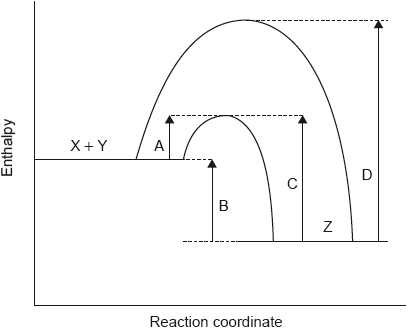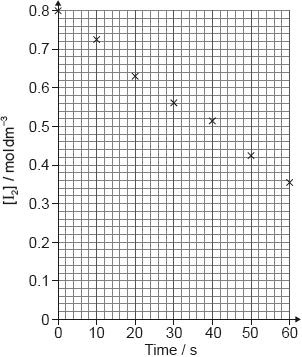| Date | May 2019 | Marks available | 1 | Reference code | 19M.3.hl.TZ2.1 |
| Level | HL | Paper | 3 | Time zone | TZ2 |
| Command term | Identify | Question number | 1 | Adapted from | N/A |
Question
This question is about a mug made of a lead alloy.
The rate of lead dissolving in common beverages with various pH values was analysed.
Identify the experiment with the highest rate of lead dissolving.
Suggest why the relationship between time and lead concentration for Cola at 16 °C is not linear.
Examine, giving a reason, whether the rate of lead dissolving increases with acidity at 18 °C.
Lead(II) chloride, PbCl2, has very low solubility in water.
PbCl2 (s) Pb2+ (aq) + 2Cl− (aq)
Explain why the presence of chloride ions in beverages affects lead concentrations.
A mean daily lead intake of greater than 5.0 × 10−6 g per kg of body weight results in increased lead levels in the body.
Calculate the volume, in dm3, of tap water from experiment 8 which would exceed this daily lead intake for an 80.0 kg man.
Markscheme
6 [✔]
Note: Accept “orange juice”.
equilibrium is being established «between lead in solution and in mug»
OR
solution becoming saturated
OR
concentration of lead ions/[Pb2+] in the solution has increased «over time»
OR
acid concentration has decreased «as reacted with lead»
OR
surface lead has decreased/formed a compound/forms insoluble layer on surface
OR
acid reacts with other metals «because it is an alloy» [✔]
Note: Do not accept “concentration of cola, orange juice, etc… has decreased”
Do not accept a response that only discusses mathematical or proportional relationships.
no AND experiment 7/beer has lowest rate and intermediate acidity/pH
OR
no AND experiment 6/orange juice has fastest rate but lower acidity/higher pH than lemonade
OR
no AND experiment 6/orange juice has highest rate and intermediate acidity/pH [✔]
Note: Accept no AND any comparison, with experimental support, that concludes no pattern/increase with acidity
eg: “rate of Pb/lead dissolving generally decreases with acidity as tap water has highest rate (after orange juice) while lemonade (lower pH) has lower rate”.
equilibrium shifts to the left/towards reactants [✔]
lead «compounds/ions» precipitate
OR
concentration of lead «ions»/[Pb2+] decreases [✔]
Note: Award [2] for “equilibrium shifts to the left/towards reactants due to common ion effect”.
Accept “lead ions/[Pb2+] removed from solution” for M2.
«daily limit = 5.0 × 10–6 g kg–1 × 80.0 kg =» 4.0 × 10–4 «g of lead» [✔]
«volume » 2.7 × 10–2/0.027 «dm3» [✔]
Note: Award [2] for correct final answer
Examiners report
This part was correctly answered by the majority of the candidates.
A surprising number of candidates gave evidence for the non-linearity but then did not go on to explain why, giving no reasons or causes rooted in chemical theory. The command term "suggest" involves proposing a solution or hypothesis. Here the instruction "suggest why" indicates that the reason has to be explained.
The candidates who examined the data and quoted it in their answer generally scored the mark but several candidates did not refer to the data table.
Several candidates missed that this question was based on the equilibrium and it will shift to the left in presence of chloride ions.
Majority of the candidates scored two marks but some struggled with the conversion of grams to milligrams.



